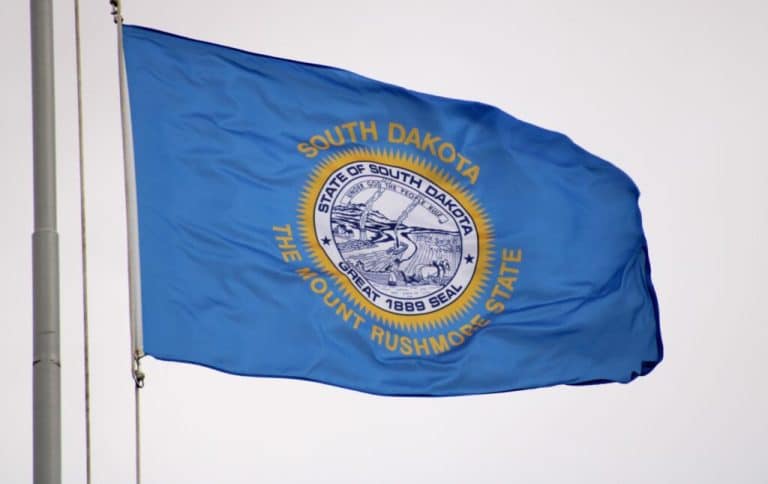WEBSTER, SD – When President Joe Biden mentioned the term “burn pits” while discussing health benefits for military veterans during his State of the Union address March 1, many Americans heard of the issue for the first time.
Congress is crafting legislation to assist post-9/11 combat veterans exposed to toxic smoke from burn pits that contractors used to dispose of human waste, chemicals, munitions and other hazardous materials in Iraq and Afghanistan.
For Jerry Somsen of Webster, S.D., who grew up dreaming of being a soldier, and who helped command a South Dakota Army National Guard battalion during Operation Iraqi Freedom, Biden’s words were merely a reminder that the wounds of war can linger, even when their origin is unclear.
The 54-year-old insurance executive started experiencing tremors in his hands a few years after returning from southern Iraq in 2005. The shaking soon spread to both sides of his body and down his legs. Last year, a doctor diagnosed Somsen with Parkinson’s disease, a progressive nervous system disorder, though Somsen has no family history with the disease.

Sitting at his dining room table on a recent evening with his wife Kari, a lawyer who works in Groton, Somsen’s hands shook noticeably as he recounted the neurological tests and other medical appointments that so far have not led to any disability coverage for his illness from the U.S. Department of Veteran Affairs, which only recognizes certain conditions as linked to burn pit exposure.
“I didn’t have this when I went over there, and I came out knowing something was wrong,” said Somsen, a Castlewood native and South Dakota State graduate who retired after 23 years of National Guard service in 2009. “I guess you could say we signed up for it, but we didn’t sign up to not be protected once we got back.”
Somsen is one of 16 South Dakotans on a confidential registry of veterans self-reporting symptoms of burn pit exposure, ranging in severity from nasal congestion to lung cancer. The registry is maintained by Burn Pits 360, a non-profit advocacy group that has pushed the VA to develop its own data gathering effort after Congress passed legislation in 2013.
“We trust these (veterans) with our lives and with national security,” Kari Somsen said. “But when it comes to him saying, ‘Look I have this issue and I believe it came from Iraq,’ we need to make it so we trust these people a little bit more. They’re not lying. They need help.”
Called to serve in Iraq
Jerry Somsen grew up as one of seven children on a family farm outside Castlewood, S.D., south of Watertown. He joined five of his siblings in attending SDSU, but not before becoming fascinated with the pomp and precision of military service.
“My oldest brother, Lowell, was in the National Guard as an officer,” Somsen recalled. “I went to one of his drills at the armory in Mitchell and decided that I wanted to be that guy.”
Jerry entered the Reserve Officers’ Training Corps at SDSU with basic training already completed, wanting to hit the ground running. By the time he graduated in 1990 with a degree in mathematics, he headed to Field Artillery Officers Basic School at Fort Sill, Oklahoma, where his math background helped him excel.
By the time he earned his master’s degree at SDSU in 1994, Somsen had three children and was going through a divorce while still a member of the National Guard but pondering his path. He took a job at Dakotah Incorporated in Webster in 1997 and met Kari through church, teasing her about her lines in an Easter pageant.
They were married in 2000 and added a daughter to a family that already included three girls. But any semblance of domestic bliss was staggered when Somsen showed up to work on Sept. 11, 2001 and saw the planes hit the World Trade Center.
He was in the South Dakota Army National Guard’s 2nd Battalion, 147th Field Artillery. The 1st Battalion was called to action in 2003 as part of Operation Iraqi Freedom but never deployed overseas from Fort Sill. “They weren’t needed,” said Somsen. “The war got over too fast.”
The 2nd Battalion deployed later that year with the mission of capturing and destroying enemy ammunition, with Somsen serving as executive officer, second in command. It didn’t take long to notice the thick layers of smoke that wafted through the compound from fire pits on the perimeter.
“From the first day we got there, there was smoke everywhere,” said Somsen. “If the wind was right, you’d walk to lunch in it. We just thought they were burning the trash.”
‘Can I live until I’m 80?’
Even before Somsen returned home from Iraq in February 2005, he felt like something was wrong. He had periods of nervousness or anxiety that didn’t exist before, though he managed to calm himself down.
The tremors in his right hand and side started after his return and worsened, making it difficult to hold the microphone when he gave a Veterans Day speech in Webster in November 2007. When he showed up at his old high school in Castlewood for a Memorial Day event six months later, he had to hide his hands behind the podium and later made the decision that his public speaking days were over.
Somsen was aware of the perils of war. He knew that other veterans were more severely impacted by their time in Iraq, and that some had lost their lives. He downplayed what was happening to him, even to his family, and focused on his job in the Webster office of DakotaCare, where he has worked since 2007.
“On the way back from Iraq, I found out I was going to be battalion commander, which is what I’d been working for basically my whole life,” he said. “I still had a chance to make full colonel. If I mentioned anything (about the tremors), I was afraid that I’d be forced into a medical discharge.”
After trying to keep his command while tremors progressed to both sides of his body and down his legs, Somsen made the decision to retire in 2009 with the rank of lieutenant colonel. His next battlefield occurred back home and took the form of hospital corridors and exam rooms after applying for disability, joining a legion of fellow soldiers seeking relief from the government.
According to VA press secretary Terrence Hayes, the department is tracking claims for about 2.5 million veterans who were deployed to the Gulf War region from September 2001 to the present and were potentially exposed to various airborne hazards. Of those, about 1.6 million have filed a claim for disability compensation.
Diagnostic procedures, including a spinal tap and brain testing, led a neurologist to conclude in 2021 that Somsen had Parkinson’s disease. His assessment said the illness was “more likely than not related to his exposure during his time in Iraq, possible bringing symptoms out much earlier than would have otherwise presented. He has no other family risk factors.”
Contacted by South Dakota News Watch, Hayes said the VA’s position is that “no link has been established to date between these exposures and Parkinson’s Disease,” citing research from the National Academy of Sciences, Engineering and Medicine.
Somsen, after years of trying to hide his ailment, is now in the uncomfortable position of having to prove it exists, with Kari as his main advocate. After seeing the most recent review of his disability claim rejected, they’re considering taking their case to the Board of Veterans’ Appeals in Washington D.C.
“It’s frustrating because I don’t know what the future holds,” he said. “Can I live until I’m 80? What if it’s not Parkinson’s and it’s something else? You realize that it could be more and more debilitating and you look around for answers, and they’re not easy to find.”













